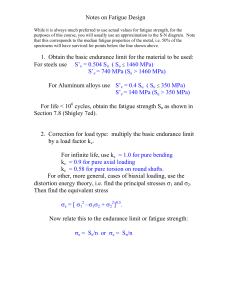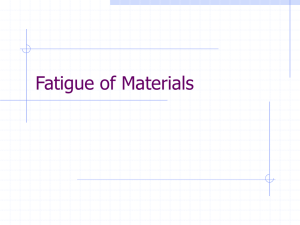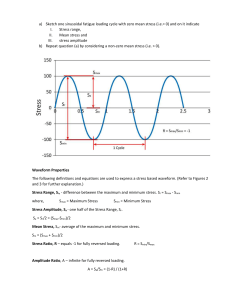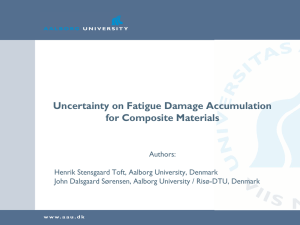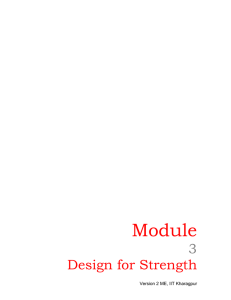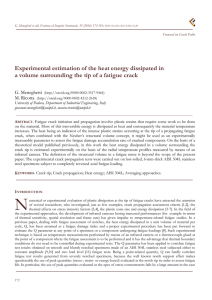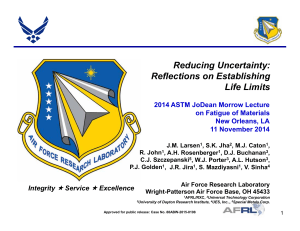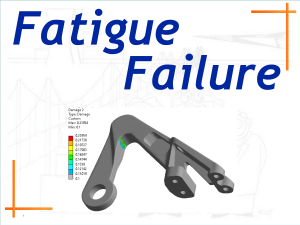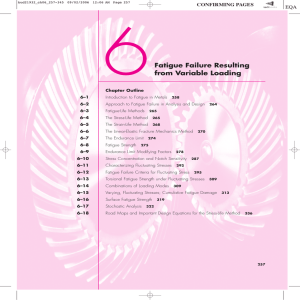3.35 Problem Set #7 Assigned: 11/25/03 Due: 12/4/03 in class
advertisement
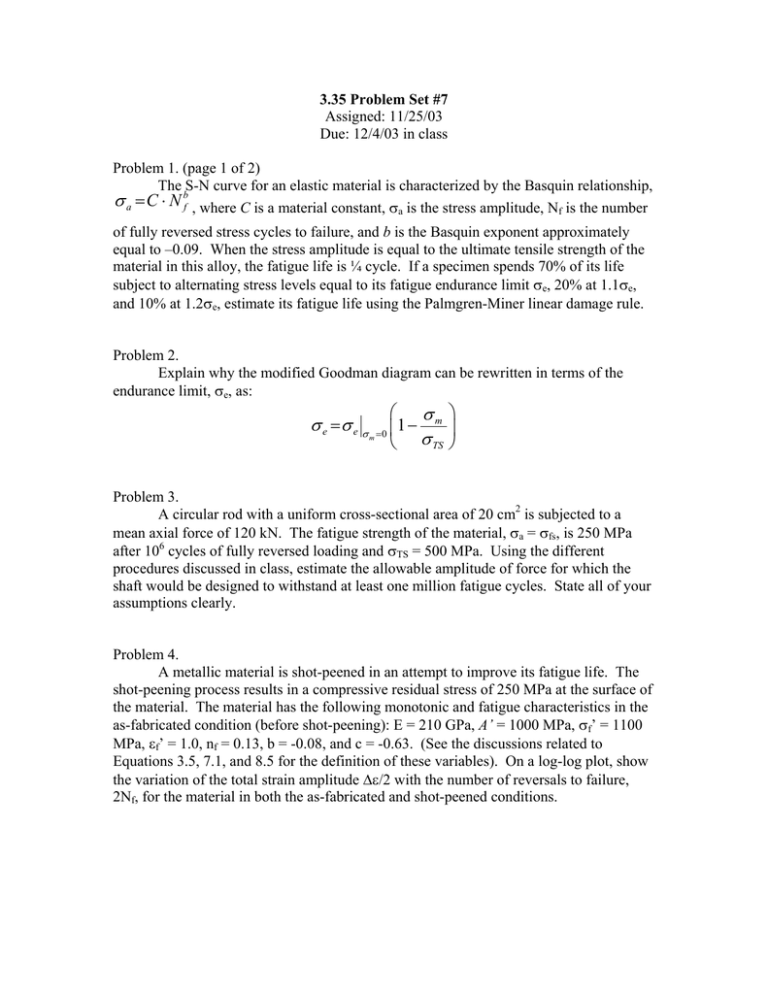
3.35 Problem Set #7 Assigned: 11/25/03 Due: 12/4/03 in class Problem 1. (page 1 of 2) The S-N curve for an elastic material is characterized by the Basquin relationship, σ a = C ⋅ N bf , where C is a material constant, σa is the stress amplitude, Nf is the number of fully reversed stress cycles to failure, and b is the Basquin exponent approximately equal to –0.09. When the stress amplitude is equal to the ultimate tensile strength of the material in this alloy, the fatigue life is ¼ cycle. If a specimen spends 70% of its life subject to alternating stress levels equal to its fatigue endurance limit σe, 20% at 1.1σe, and 10% at 1.2σe, estimate its fatigue life using the Palmgren-Miner linear damage rule. Problem 2. Explain why the modified Goodman diagram can be rewritten in terms of the endurance limit, σe, as: σ e =σ e σ σm 1 − m =0 σ TS Problem 3. A circular rod with a uniform cross-sectional area of 20 cm2 is subjected to a mean axial force of 120 kN. The fatigue strength of the material, σa = σfs, is 250 MPa after 106 cycles of fully reversed loading and σTS = 500 MPa. Using the different procedures discussed in class, estimate the allowable amplitude of force for which the shaft would be designed to withstand at least one million fatigue cycles. State all of your assumptions clearly. Problem 4. A metallic material is shot-peened in an attempt to improve its fatigue life. The shot-peening process results in a compressive residual stress of 250 MPa at the surface of the material. The material has the following monotonic and fatigue characteristics in the as-fabricated condition (before shot-peening): E = 210 GPa, A’ = 1000 MPa, σf’ = 1100 MPa, εf’ = 1.0, nf = 0.13, b = -0.08, and c = -0.63. (See the discussions related to Equations 3.5, 7.1, and 8.5 for the definition of these variables). On a log-log plot, show the variation of the total strain amplitude ∆ε/2 with the number of reversals to failure, 2Nf, for the material in both the as-fabricated and shot-peened conditions. Problem 5. Assume a large plate with an initially non-closing notch is subjected to cyclic compression loading. How do the stress cycles below affect the crack length vs. number of cycles (a vs. N) curve? σ time 0 σ 0 σ 1 time 0 σ 3 time 2 0 4 time Problem 6. Discuss a set of conditions under which the application of a tensile overload to a component can result in (i) an improvement, (ii) a reduction, or (iii) no change in fatigue life. Provide at least one practical example for each situation. Problem 7. Problem 14.2 from S. Suresh, Fatigue of Materials.


